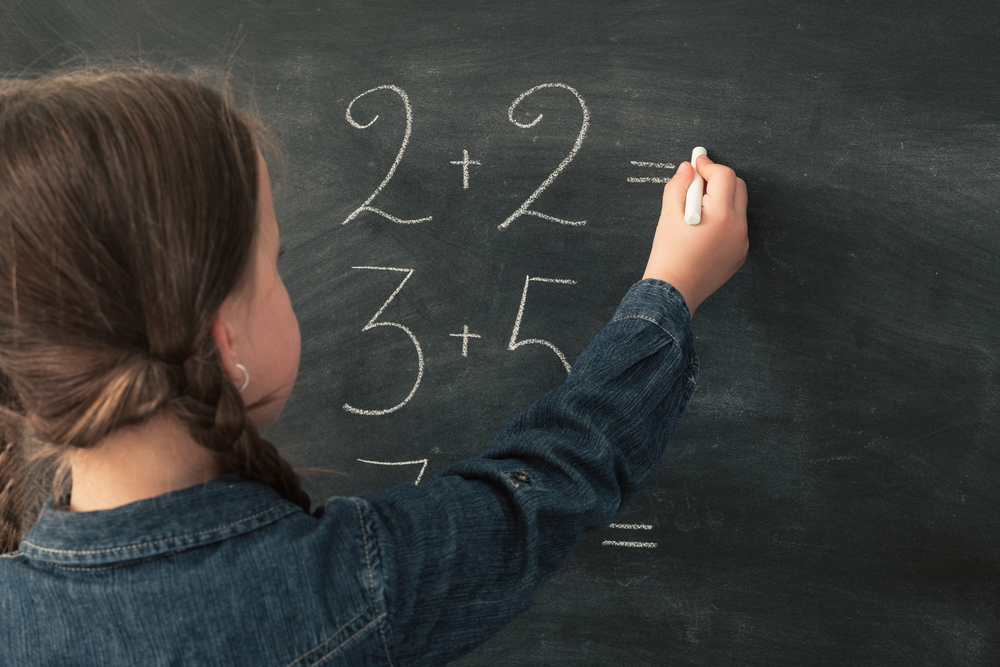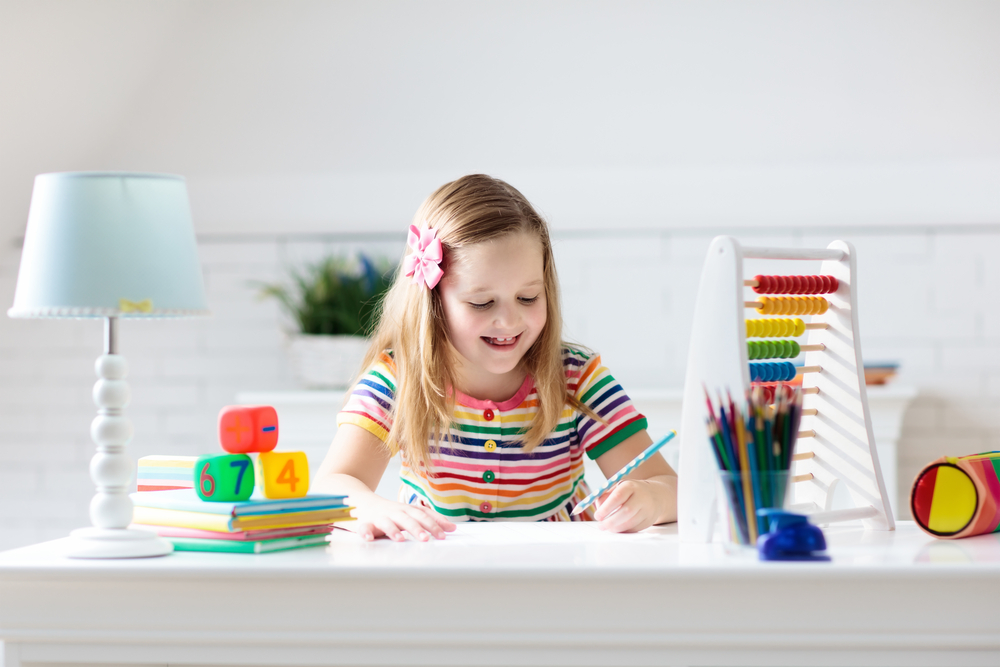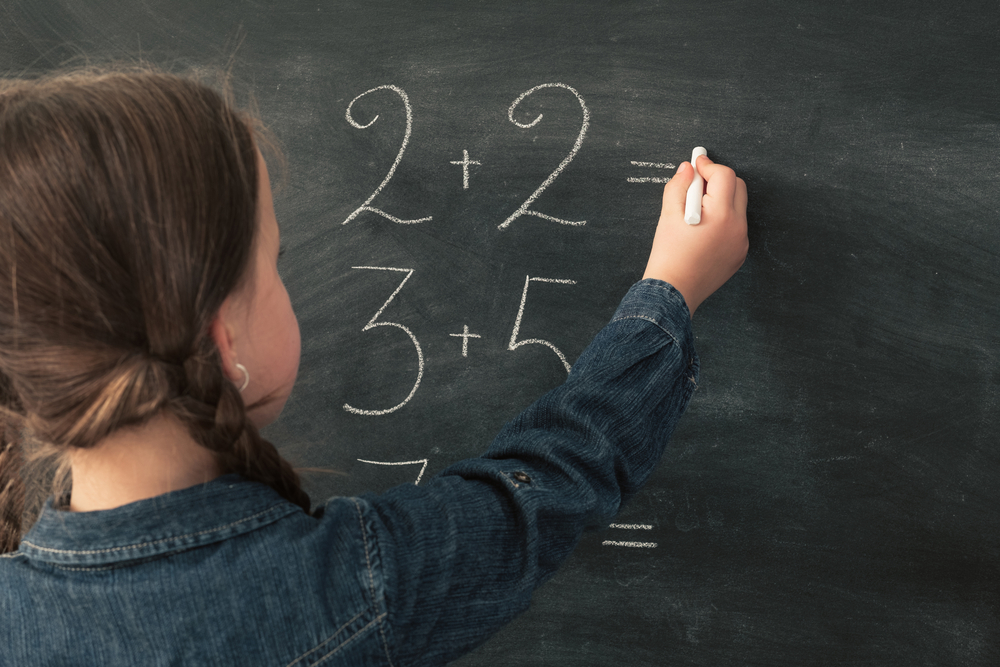Helping your child develop number sense might seem like an intimidating task, but as you’ll soon discover, they may already be comfortable with some of these mathematical concepts.
For example, if your child has ever asked for more candy or a bigger slice of pizza, they are already starting to observe the world around them and compare objects by looking at their size, shape, quantity, and so much more.
All of these are crucial mathematical skills and a part of the learning process.
In this article, we’ll share five effective strategies you can use at home to help your child develop number sense. But first, let’s talk about what number sense actually is.
What Is Number Sense?

“Number sense” is an umbrella term that refers to a set of skills that helps us work with numbers. Developing this ability allows us to perform math equations and many other everyday tasks as well.
For example, every time you shop for the best price of an item, you compare different offers from various stores. You might also consider how far you have to travel to those stores and estimate how much gas it would take (or the delivery costs if you’re ordering online).
All of this comparing one option to another is how we use number sense daily.
When a child has strong number sense, they:
- Can think flexibly about numbers. For example, once they know that 3+3 is 6, they can conclude that 3+4 must be one more.
- Understand the order of numbers (e.g., 1st, 2nd, 3rd, etc.).
- Have grasped number symbols and what they mean (e.g., four is the same as 4).
- Understand quantities.
- Understand the concepts of more, less, smaller, and greater than.
- Can develop their own strategies for solving problems relating to numbers. For example, they understand that you can take numbers apart and also put them together in different ways — 1+9, 2+8, 3+7, 4+6, 5+5, 3+3+3+1 are all different ways to make up ten.
- Can estimate. For example, “It took me three giant steps to get to the chair, so it will probably take eight baby steps.”
- Can relate the numbers and concepts they come across in math to real-world problems.
Why Is It Important?
In a nutshell, developing number sense helps children understand numbers concretely — not based on number recognition or memorizing words, but really understanding numeracy intuitively.
When a child has this skill, it means that they have begun to internalize the number system. For example, they can easily conclude that if 7+3 is 10, then 7+7 cannot possibly be less than 10.
Developing number sense helps children understand basic math, and they build on this foundation when working with more complex math concepts in the future.
But what happens when a child doesn’t have this ability? A child with poor number sense is likely to struggle with everyday tasks, like judging time and measuring. They may also have difficulty with addition and multiplication.
If your young learner is struggling to grasp these concepts, don’t immediately worry. Number sense is a group of skills, which means that it can be learned or improved upon with time, practice, and determination.
To help you work with your child and build their concrete understanding of numbers, here are five of our favorite math games to play at home.
5 Activities To Build Number Sense At Home
1) Create A Guessing Station

What You’ll Need:
- Mason jar (or any available clear container)
- Lots of small items (e.g., beans, legos, tongue depressors, etc.)
What To Do:
To create your guessing station, start by filling a mason jar with small items. Then, place the jar in a central location in the house that everyone can access (i.e., the kitchen countertop).
The rules of the game are simple:
- Family members have one week (or a few days) to guess how many items are in the jar.
- No one is allowed to open, move, or even touch the container.
- The person who guesses closest to the actual number of items wins! (You can also decide if the winner gets a fun surprise.)
This is a great way to help your child make estimations and predictions based on their observations.
If you see them struggling, you can help your young learner develop different strategies to arrive at their conclusion. For example, help them count items on one side of the jar and consider the volume of the container to reach a conclusion.
Quick Tip: Don’t forget to write down how many items you put in the jar somewhere!
2) Practice Number Of The Week
What You’ll Need:
- Chart
- Number printouts
- Scissors
- Glue stick
What To Do:
You can start each week by creating a chart that represents a number in different ways.
For example, let’s say this week’s number is five. You can help your child cut out and stick “5,” “five,” and “5th” onto their chart.
While understanding symbols is essential, children also need to grasp what the number five actually means. So, add one row of five blue dots to your chart. Then, on the following line, have four blue and one red dot, then three blue and two red dots, etc.
This visual representation can help your child begin to intuitively understand what the numbers mean instead of just memorizing symbols.
3) Get Creative With Sums

As highlighted above, number sense involves understanding how to take numbers apart and put them together in different ways. So, when your child is practicing sums, encourage them to think “outside the box.”
For example, if they know that 4+4 adds up to 8, they are likely to always (or often) write this down when asked. But we want our children to be comfortable using different strategies to solve problems.
To help them think critically, you can say, “6+2 also makes up 8. Can you think of other ways to make up 8?”
At first, it might be very challenging for your child to produce another solution. That’s OK! Encourage them to use an abacus or count items like beans to make the idea concrete.
With lots of time and practice, they’ll grasp that there are multiple ways to make up a large number.
4) Match The Quantities
What You’ll Need:
- Chart (or large craft paper)
- Scissors
- Glue stick
- Multiple paper cutouts of different shaped items (e.g., candy sticks, red dots, teddy bears, dice, etc.)
What To Do:
To get started, place two different quantities of the same item in different rows, leaving some space between them. For example, you can glue four candy sticks to one line on your paper and five candy sticks to the following line.
Then, encourage your child to count one row of items. After doing so, have them make another row of the same quantity using a different item.
So, if you have red dots or pictures of teddy bears, your child could place four red dots or four teddy bears below the original row to represent the number four.
Next, have them count the other row on their paper and repeat the matching exercise.
This creative hands-on activity can help children understand quantities and that, even though the paper candy sticks and dots don’t look the same, they both represent the same number.
5) Greater Than, Less Than, Equal To House Hunt

What You’ll Need:
- Sheet of paper
- Marker
- Scissors
- Glue stick
- Magazines
What To Do:
Start by drawing two columns of five blocks next to each other (2 x 5) on your sheet of paper. In each block, write a number. Then, next to the number, add a greater than, less than, or equal to sign (<, >, =).
Next, cut out numbers from a magazine that are the answers to the equations you have created. Lastly, hide the answers in different areas around the house and have your child hunt for the correct numbers to put on their sheet of paper.
To make it easier, you can give your child clues about where you’ve hidden the numbers — When you see blue, you will find a number.
You can also make it a little more interesting by adding a time limit to their search. How many answers can you find in 10 minutes?
Comparisons of different quantities are an essential component of number sense. And this fun math game can help your child to continue developing this skill.
Building A Strong Mathematical Understanding

Number sense plays an essential role in our everyday lives. Every time we measure out the ingredients to bake a cake, shop for the best price, or compare the distances of different routes before we travel, we’re using number sense.
As adults, these concepts have become second nature to us. And by using the activities we’ve mentioned in this article, you can help your young learner understand and master their number sense, too.
In addition, you can also use our Learn & Grow app to give your child more practice strengthening other essential mathematical skills.
Of course, building confidence in mathematical concepts doesn’t happen overnight, but with practice, you’ll be hearing them apply these skills in so many ways.
So, the next time they tell you your cupcakes are the best they’ve ever tried or that your hair looks better shorter, you can thank number sense for that!
,


